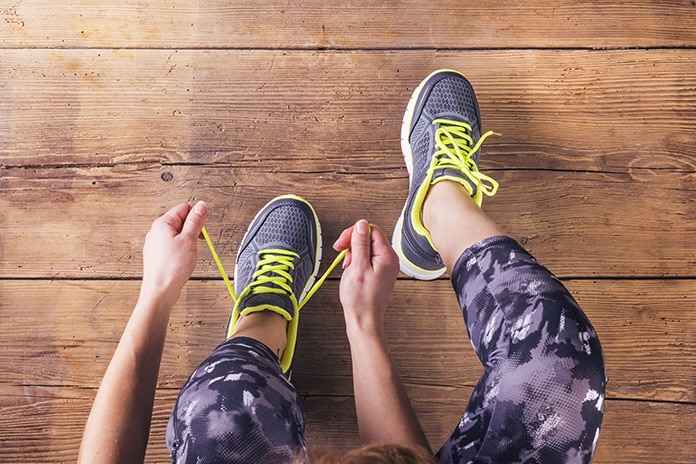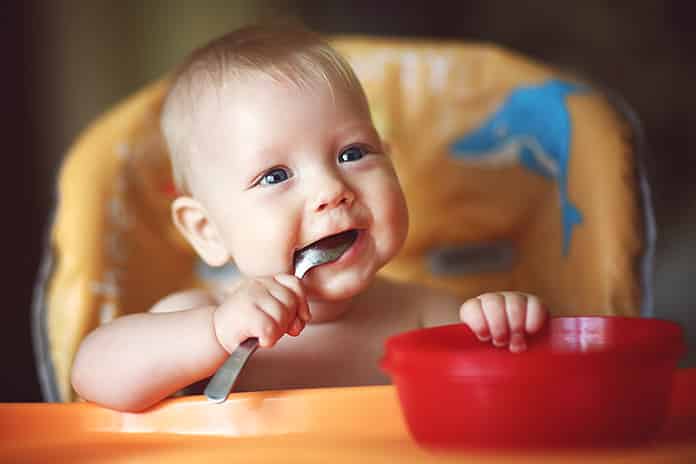Parenting professionals and leading mumpreneurs answer some of your most pressing questions
Una Miller
Una Millar is a Registered Midwife and the Screening Midwife at The Kensington Wing
What are my options if the results from my NHS screening tests come back as increased risk for chromosomal abnormalities?
As part of your routine antenatal care you will be given the option to test for a number of chromosomal abnormalities (Downs, Edwards, Patau syndrome). Outside of the NHS offering you may wish to avail off the non-invasive prenatal test (NIPT) which analyses your baby’s DNA which is present in your blood stream whilst pregnant. Traditional screening tests can miss as many as 15% of chromosomal abnormalities whereas NIPT testing will detect 99%. Currently NIPT is not available on the NHS. The results you will receive are a more accurate risk predictor than traditional tests offered such as combined screening. It reduces the risk of invasive procedures, which may have a higher miscarriage rate. A high risk result does not necessarily mean that you baby will be affected; it will be an indicator for further invasive testing such as chorionic villi sampling or amniocentesis. The NIPT can be performed from 10 weeks gestation and consists of a simple blood test.

Nicole Hastie
Nicole Hastie is a Carrying Consultant and Director of Kangaroo Care UK. She is passionate about helping parents learn the benefits of skin to skin contact with their babies.
Should I put skin to skin contact in my birth plan?
Where possible, mother and baby should spend time skin to skin for an uninterrupted hour immediately after birth. Once essential checks have been made, ask for the noise levels and lights to be kept low, giving you and your baby time to rest and get to know each other. Ensure you are both warm enough and comfortable by wearing something that supports baby on your chest and covers your body to maintain your own temperature. Baby’s heart rate, body temperature and respiration will usually stabilise during skin to skin contact, easing their transition from the womb to the world. Being held against mum’s skin can help baby’s immune system, reducing the risk of infection.
Requesting skin to skin contact as part of your birth plan, and packing a comfortable and supportive kangaroo care top or wrap, will help you enjoy this simple but powerful way of welcoming your baby into the world. Births don’t always go to plan but skin to skin contact has many benefits even when it cannot happen straightaway.
Choosing what to wear for skin to skin contact doesn’t have to be expensive. There are comfortable options, such as the Bandeau from Vija Design which starts from just £17.99.
Camilla Lawrence
Lead Women’s Health Physio at SIX Physio advises on getting back to exercise safely after having your baby
• First 6-8 weeks: Focus on gradually getting back to walking. Start small with 5-10minute strolls and slowly increase the distance over a few weeks. Get going on your pelvic floor (Kegal) exercises; try doing them every time you feed your baby. See a Women’s Health physio if you are struggling with these or any incontinence or prolapse symptoms.
• 6-12 weeks: After your 6 week check with your Dr, start working on rebuilding your core strength with a specialised personal trainer or post-natal Pilates or Yoga Class. You can also start to increase your cardiovascular exercise but keep it low-impact still at this stage (e.g. fast walking, swimming, cycling, cross-trainer).
• 12 weeks+: Continue building on your core strength and conditioning work and if you are pain free with no pelvic floor problems, you can start returning to impact exercise again (jogging, aerobics, tennis, netball etc).
Get a full Postnatal Body Check by an expert Women’s Health Physio from 6 weeks post partum. This includes a detailed assessment of your posture, back, pelvis, pelvic floor and abdominal muscles, identifying any problem areas and how to fix them, and giving you a safe and individualised exercise regime.

Heather Morris
Heather Morris is a Registered General Nurse and State Certified Midwife. She is mum to Freddy, Harry and Jack.
Can nappy rash be prevented?
No matter how careful you are, most babies are likely to get nappy rash at some time. Nappy rash is usually mild and can be managed with a good skincare routine and a barrier ointment. Taking care of your baby’s delicate skin is essential in both treating and preventing nappy rash. Following these simple steps will help:
• Lie your baby on a towel and leave your baby’s nappy off as often as you can, to let fresh air get to the skin.
• Change wet or soiled nappies as soon as possible.
• Clean the nappy area thoroughly using plain water or alcohol and fragrance free wipes.
• Don’t use talcum powder as it contains ingredients that could irritate your baby’s skin.
• Try to bath your baby every day, but don’t use soap or bubble bath.
• Gently pat rather than rub your baby’s bottom dry and avoid vigorous rubbing.
• Use a suitable barrier ointment at each nappy change.
Most mild cases of nappy rash can be easily treated with an ointment from your pharmacy and following this skincare routine, but if you are worried always seek the advice of a healthcare professional.
Helen Gardiner
Helen Gardiner is an experienced nutritionist who works with one of the UK’s most popular baby food brands, Hipp.
When is best to introduce lumpy food when weaning?
Learning to chew is an important stage in your baby’s development, helping with the correct muscle development and use of the tongue needed for speech, and of course is also a vital step in them adapting to family-style meals. There is a critical period in the second half of infancy during which babies more readily accept new tastes and textures. It can be tricky at first, but it’s important to persevere with lumpier foods from around 6-7 months of age. Research has shown that babies not given lumps until after 9 months are more likely to be difficult, picky eaters. These problems are still evident at 15 months and even at 7 years of age.
If you’re preparing your own baby foods, adjust the consistency according to what your baby can cope with, aiming for more and more lumps and a coarser texture as you go.
Start by mashing soft fruits, cooked vegetables or cooked pasta, perhaps with some mashed fish or pureed meat. If you are using ready-made baby foods, switch from Stage 1 to Stage 2 foods that are specially designed for this next phase of feeding. Don’t be surprised if your baby spits out lumps to begin with – this is normal. Just leave it for a few days and then have another go. They will get there in the end!
Of course, there is always the possibility of choking, however, so never leave your baby on their own whilst they are eating.

Anya Abdulakh
Anya Abdulakh is the founder of 3 House Club, a family club in St. John’s Wood that runs developmental and educational classes for children from 0 to 8 years old.
What can parents of babies and toddlers can do to boost their child’s cognitive development?
As soon as your baby is born, you can support your child’s future cognitive and emotional development through abundant skin-to-skin contact and consistent emotional attention. There is plentiful scientific research to show that physical contact between a mother and a baby leads to improved emotional and social behaviour at later stages of a child’s life. Skin-to-skin contact stabilises the heart rate (i.e. makes the baby calmer) and improves quality of sleep, which impacts baby’s brain development and hormone levels. Just keep hugging and kissing your little one!
Exposing your baby to your own language through talking, singing and reading is very important. One study showed that babies’ abilities to discriminate phonemes at 7 months is a predictor of the child’s reading skills at the age of five.
Reading to pre-nursery children activates specific brain areas supporting semantic processing which is the key for oral language development and later reading skills.
The other important opportunity to boost your baby’s development is to expose him/her to a variety of languages in a face-to-face environment. Studies show that the ability to acquire language skills dramatically declines after the age of seven. At 3 House Club we offer Mandarin and other language playgroups with native speakers as well as various live music rhyme singing classes to help you to support your child’s development.
Marie Louise
Marie Louise is the founder of Marie Louise Maternity. These are her top tips for travelling before your little one arrives. Also, find out how you can go on your own dream babymoon.
Babymoon breaks have recently become very popular and rightly so. You, your body and your partner are about to experience one of life’s biggest changes, especially if you are expecting your first baby. Your whole body has changed and is continuing to change. Your blood volume will increase by 50%, your internal organs move and your lungs change shape; not to mention the added hormonal changes you are experiencing. You need to take time out away from everything and enjoy quality time with your bump and whoever you plan to take to your birth, be it your partner, friend, mum or doula. There is so much to consider during pregnancy and I’m a firm believer in taking time out to think through, appreciate and consider what’s to come. Breaks are most popular during the second trimester as you should have plenty of time before your baby is born. The time spent away from work and other commitments is important during pregnancy, not just on maternity leave. It doesn’t matter where you go, it matters that you take this time for yourself and your baby.
Consult your GP or midwife and the airline to discuss safety of travelling; most airlines will allow you fly up to 28 weeks. Ensure you keep well hydrated on the flight and wear flight stockings to prevent blood clots. Walk up and down the plane and move your ankles around in circles to help circulation. You might want to pre-book an aisle seat, in order to be able to get in and out of your seat to do this and to use the bathroom. One of the most important things for you to pack is any medication you need and your hospital notes, whether your trip is abroad or in the UK – it’s essential that you bring them. If you do need to seek medical advice whilst away from home – the first thing a midwife/Dr will want to do is check your history and ensure they don’t miss anything during diagnosis but without those notes they can’t get the history required.
MLM is currently running an exclusive babymoon giveaway with one of the U.K’s most beautiful and atmospheric hotels. It’s only available to six women. if this is something you would be interested in, contact the Scarlet Hotel as soon as possible to secure your place.






NO COMMENT